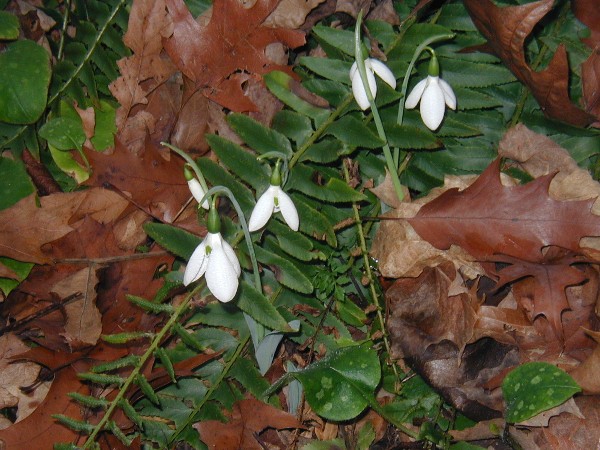
It happens around Thanksgiving. I'm trudging along a path down from the steps that lead into my garden, eyeing all the leaves waiting to be raked, weeds that never got pulled, assorted and sundry garden chores waiting to be done. "Why," I mutter in this internal dialogue running through my mind, "why bother? Why garden?"

In 1995 when I knew I would be moving from my Wilton, Connecticut garden I shared out plants with garden friends. One of them was Charles Cresson. Hedgleigh Springs, his garden in Swarthmore, Pennsylvania, was begun by his grandfather nearly a century ago, in 1911. Many good plants grow there today, skillfully placed in pleasing combinations. Charles said that when I was settled in, he'd have a few things for me. These bulbs, which he gave me a couple of years ago, were one of those plants.
'Potter's Prelude' has an interesting history. Jack Potter and his father bought some snowdrop bulbs from a hardware store in Delaware in the 1960s. Most were typical Galanthus nivalis. However there were four bulbs that each year regularly flowered in autumn. Charles Cresson acquired some and was growing them. He shared them with Carol Lim, who helped in his garden for a number of years. It was decided that before someone else "got there first" the bulbs should be registered with the KAVB, Royal General Bulbgrowers' Association, in Hillegom, The Netherlands.
It's not as simple as "I've got this bulb and here's what I'll name it." They first consulted Dr John M. Grimshaw in the UK to confirm that it was unique and had not been named previously. There are forms to be filled out, with measurements and precise, detailed description, accompanied by photographs. And then they named this snowdrop, naming it for for the father and son who, recognizing they had something rare and choice, grew it on and shared it out. Named it also for it's early bloom time.
How fortunate I am, not just in my friends but also in the flowers that brighten a gray November day and remind me why I garden.
Every year when the Japanese bush clover, Lespedeza thunbergii, come into their September display I wonder why this shrub is not more widely grown. Perhaps it is its growth habit, requiring an annual cutting back in spring before new growth begins. If you think about it though, isn't this easier? A simple whacking back of each shoot to a short woody stub a few inches tall, rather than a complicated decision of where to prune what, and when to do it. By summer's end each shrub has grown back to a fountaining mound about 5 feet tall, well decorated with flowers. Deer may take a spring-time nibble, but not every year. besides, it is only anouther bit of pruning.
Of all the bulbs I grow colchicum, confusingly called "autumn crocus" as one of my favorites. Let me list the ways in which it delights me: it flowers at summer's end when much the rest of the garden is slowing down. It is pest-proof, untroubled by deer, groundhogs, rabbits, mice, voles, or whatever other furry critters saunter through the garden. Too bad I cannot pick stocks that take off as well as colchicum, for the underground corms multiply nicely. And colchicum makes a good cut flower, useful for an autumnal bouquet.
A drizzly day is not the best for photographing ground-hugging flowers. Consider though - if they look this good under cloudy skies and wet conditions, think how great they must be in sunshine.
Tiger lily is a popular, vigorous, reliable cottage garden plant that I've seen naturalizing in a modest way in Connecticut. Lilium lancifolium, previously named Lilium tigrinum - and as an aside, have you noticed that it is only Latin names that get a taxonomic make-over every now and then: common names don't seem to change, now do they! - is actually the Typhoid Mary of the lily world. Other lilies, when infected with lily mottle virus (cause of "broken" tulips that lead to Tulipomania) develop mottled foliage, have reduced flowering, growth weakens, and the infected bulb eventually dies.
Lilium lancifolium is resistant to the virus. It may be infected but shows no signs of the disease, which could then be carried by aphids to other near-by lilies. Common sense suggests either growing Lilium lancifolium or growing other lilies, but not the two within aphid flight-range of each other. And who knows how far aphids might travel, especially with a good tail wind. I have mine at the bottom of the driveway, intermixed with ditch lilies, Hemerocallis fulva; summer phlox, Phlox panniculata; and horse mint, Monarda fistulosa - all good, sturdy, roadside, cottage garden plants.
Other interesting tidbits about this bulb: it is a sterile triploid that sets no seed. Reproduction is by means of aerial bulbils, pea-sized black bulblets that form in the axil of leaf and stem, doing so in generous numbers. And where it is native, in eastern China, Japan, and Korea, the bulb is consumed as a vegetable.
Should you want to grow some of this charming, modestly double form, my bulbs were obtained from Seneca Hill Perennials in Oswego, New York. Ellen Hornig had noticed a patch flowering along the roadside in a local garden. And having, with permission, collected some now has them available in her fascinating catalog.
'Annabelle' is a popular hydrangea for the woodland garden, flowering in summer with fat clusters of dainty white flowers that age to a pale apple green. Blooming as it does on new wood, 'Annabelle' flowers reliably every year.
Fragrant, and flowering later in summer, 'Casa Blanca' is an Oriental hybrid lily, bred from Lilium speciosum and Lilium auratum. This group includes some of the most popular and easily grown among this Queen of (bulbous) flowers. I bought the dormant bulbs earlier this year. Lacking time to plant them then and there, I potted each one up individually. It was only after they had started into growth that I plugged them into place. And now, months later, these lovely flowers are my reward.
I thought something had died and started to rot in the heat of the day. Then I remembered that there was a second Dracunculus vulgaris about to bloom. Sure enough, that was it. Bloody red color, rotting meat odor = fly pollinated.
The wild species from whence all our garden flowers come have a certain appeal for me that is unmatched by well-bred cultivars. As an example I offer one of my favorite lilies, Lilium martagon, native to northwestern Europe and northwestern Asia. The typical form has pink flowers with maroon spots. There's a dark maroon unspotted form, var. cattaniae. And var. albiflorum, a white flowered form with pink spotting, said to be rare in cultivation. And then there is the white one.
Aroids, tuberous plants in the Araceae, offer the gardener a diversity of plants. Jack-in-the-Pulpit, Arisaema triphyllum, is a native woodlander. There are a host of arisaema from abroad, many native to Japan and China, that are highly desirable. Some tender aroids are popular exotics for the summer garden - caladium, calla, and elephant ear for example. Less common are Devil's Tongue, Amorphophallus rivieri, and Voodoo Lily, Sauromatum gauttatum. And then there's Dragon Arum, Dracunculus vulgaris.
Native to centeral and eastern Mediterranean region, it is listed in books as hardy only to zone 9. But I had heard that dragon arum is hardier than that, more reliably hardy than the previous two, which it somewhat resembles. Of the three tubers I planted out several years ago, one vanished and the other two have returned year after year. One has a plain green leaf, and the other has short white lines on the finger-like sections of each pedatisect leaf. The flowers are as bizarre as devil's tongue and voodoo lily. Pale green outside, the spathe is a deep marroon red on the inside, with a rather attractive, ruffled, undulating edge. The glossy eggplant purple-black spadix emerges like a long skinny finger (or something less polite.) Intriguing, unusual, bizarre, for sure rather different, dragon arum is in flower now at BelleWood Gardens.
June has started off with rain, lots of rain. Altogether, over 4 inches. I looked at the double peonies weighted down with water and shrugged, then cut myself an armful for the house. Wonderful! Some flowers, however, stand up to the drenching downpours.
Peonies are, to my way of thinking, among the most perfect of perennials. Extremely long lived, 50 years or more. Stunning flowers, clean tidy foliage, and well-behaved in the garden. There are a couple of considerations: plant any more deeply than an inch or two and the plants will grow but not flower. And a very wet spring can result in botrytis, a scuzzy, fuzzy gray mold that damages the young shoots and flower buds. Fungal spores survive freezing, boiling, submersion in formaldehyde, and for those reasons spent peony foliage does not go into the compost heap at season's end, lest a reservoir of infection be created. Double peony flowers are stunning, but act as blotting paper when it rains. Careful support is needed to keep them upright. For that reason I grow singles and anemone-flowered cultivars that stand up to the weather on their own.
Allium 'Purple Sensation' drifts along the path on Magnolia Way. Like so many soap bubbles, violet and purple umbels float along, accompanied by the lavender blossoms of dame's rocket, Hesperis matronalis. This allium is such a satisfactory plant, needing little care to encourage a repeat performance. Year after year they make a display that's among my favorites here at BelleWood Gardens.
Wood hyacinth, Hyacinthoides hispanicus, can be a thug. Here at BelleWood Gardens its profligate nature is not a problem. It can reseed all it likes, and make offsets too. Drifts of blue flowers sweep through the woods. They seem untouched by deer, woodchucks, rabbits, or other critters that regard the garden as a salad bar. Occasionally deer will nibble the emerging leaves, resulting in a blunt, squared-off end. Otherwise both flowers and foliage are unharmed.
We moved to New Jersey in the autumn of 1995. The first few wardrobe cartons off the moving van had shrubs I did not want to leave behind. Among them was an Enkianthus pulverulentus my daughter and son-in-law had given me as a birthday present several years prior to the move. Fond of it myself, I don't know why this shrub is not more widely grown.
In May enkianthus adorns itself with clusters of dangling cream-colored bells tipped with rosey pink. Fall color is a grood rich red. Shade-tolerant, it fits into the garden as an edge of woodland plant, much the same as an azalea. Azaleas show up in garden centers, big box stores, even the supermarket. Enkianthus takes some searching. And is well worth the hunt.
September
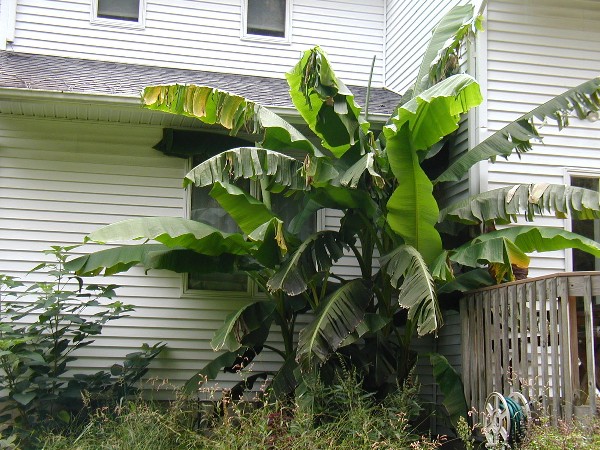
And the wind, and the rain, and some more wind have unravelled the leaves of my hardy banana.
You have to admit though, it did reach a stately size this summer.
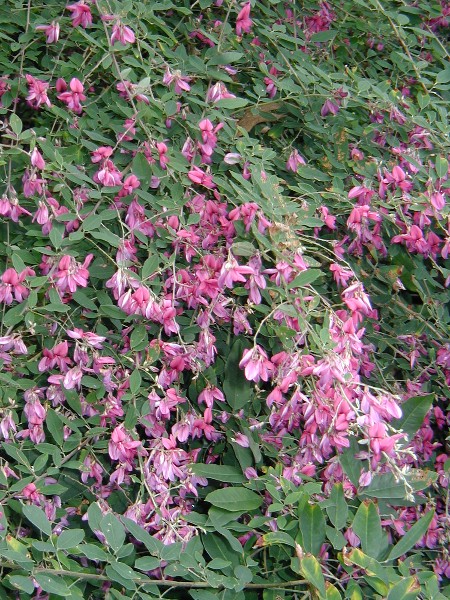
It is named for the Wilmington, Delaware garden of the same name.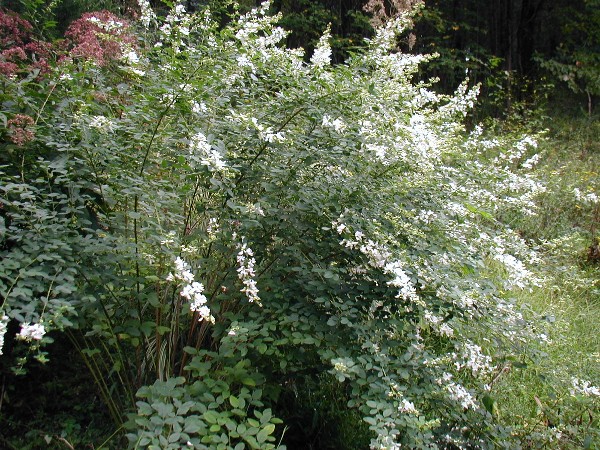
that make a fine accent with a variegated miscanthus grass as its partner.
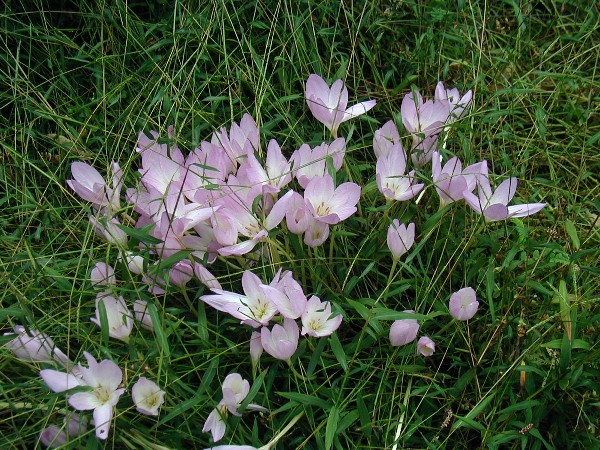
colchicum remain open. Count the stamens. Crocus have but three, while colchicum have six.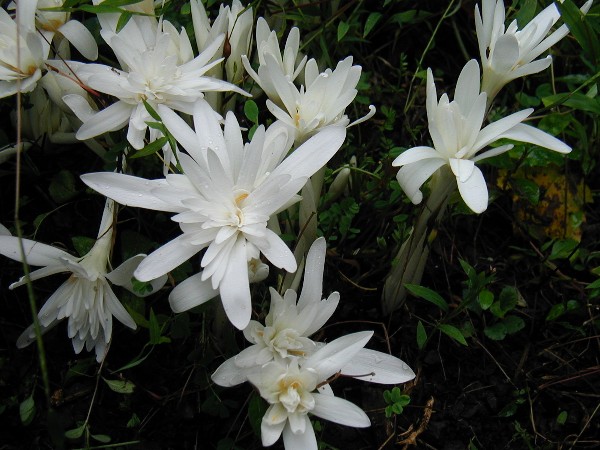
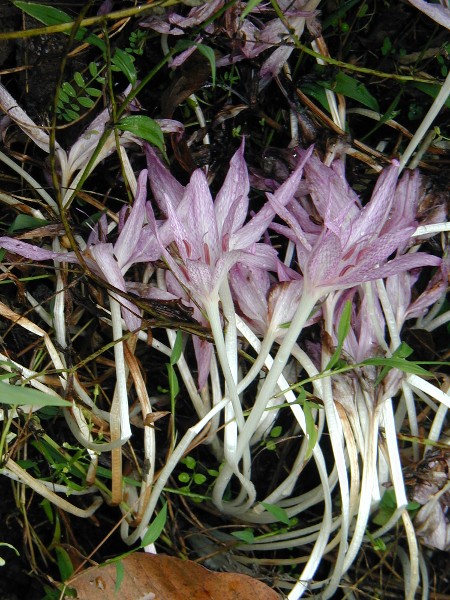
July
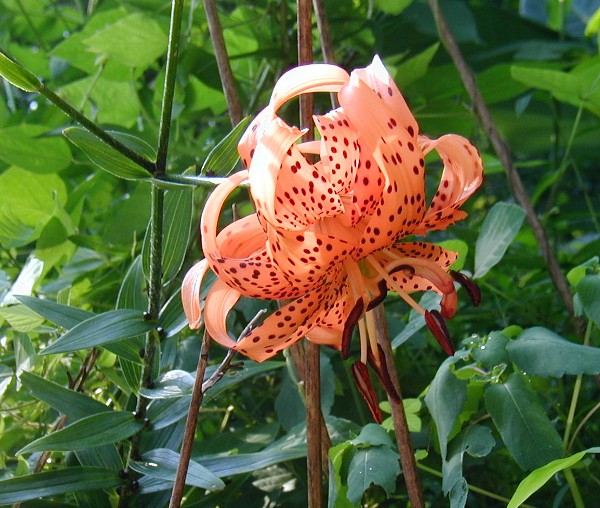
This is not the typical double form, 'Floro Pleno', which is described as having numerous narrow tepals and no stamens.
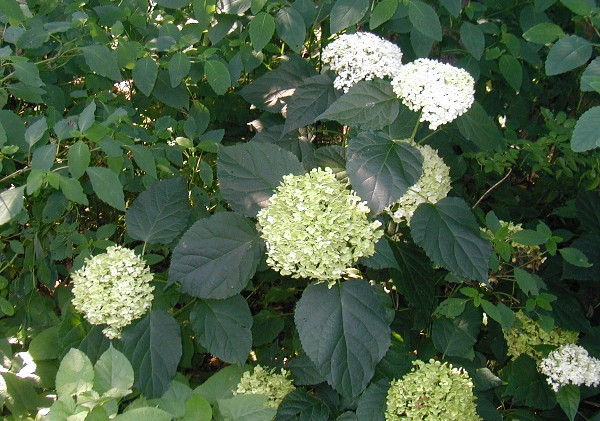
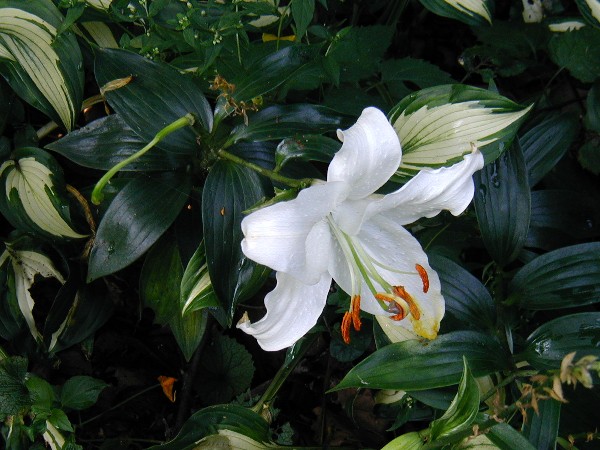
June
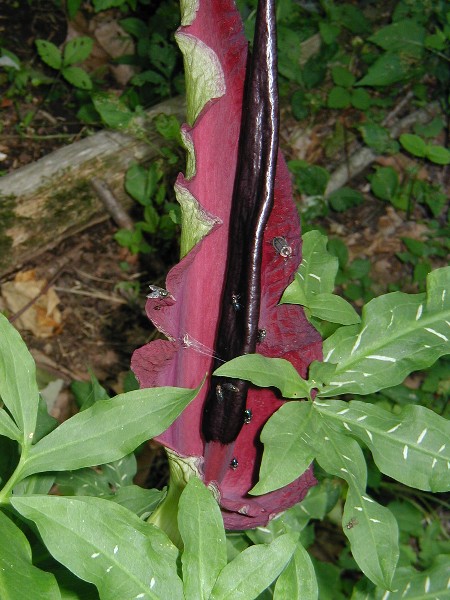
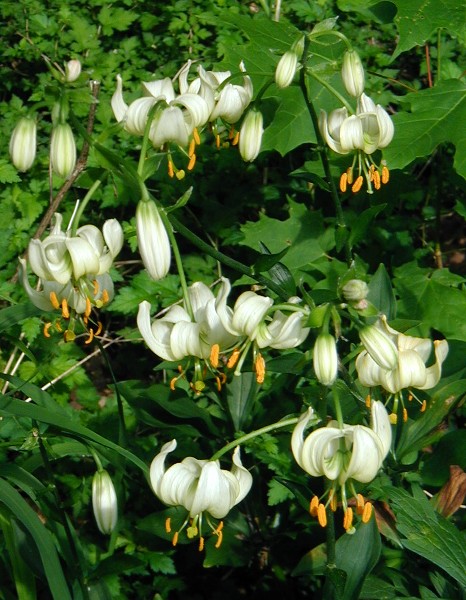
with substantial waxy white petals tightly curled back in Turk's cap form, accented by golden pollen on the stamens.
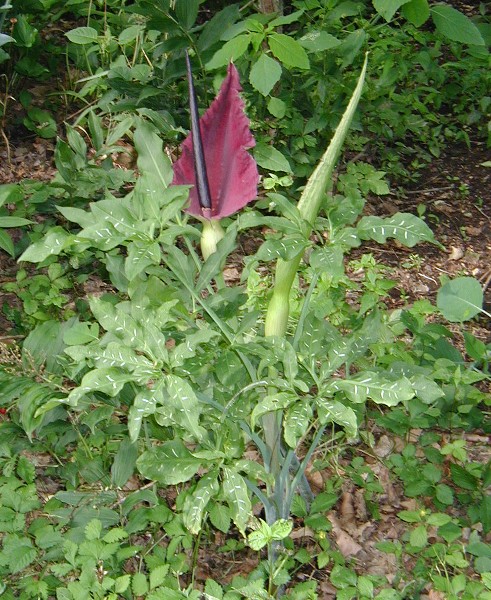
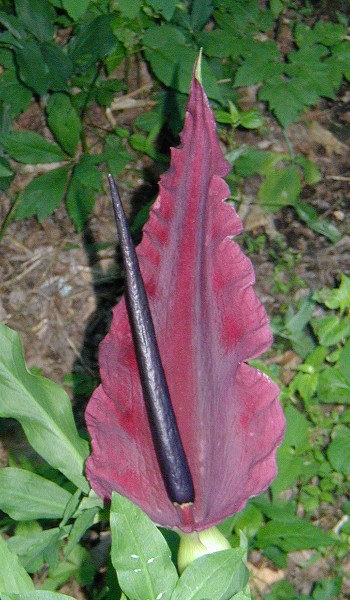
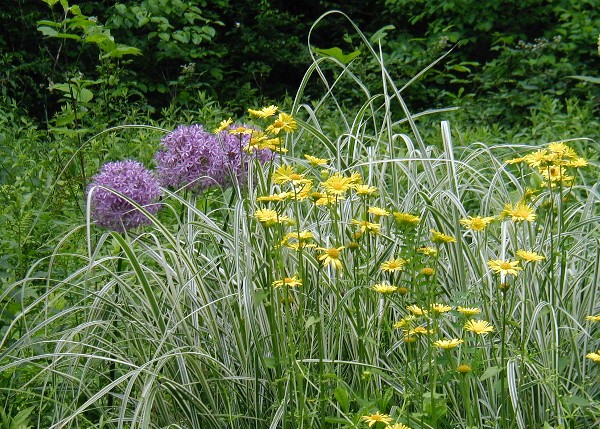
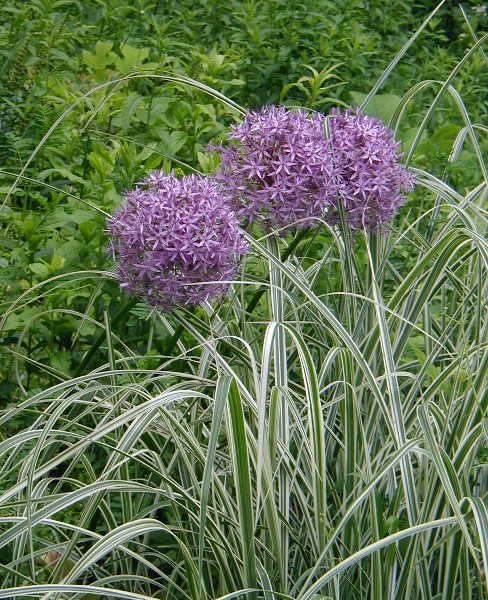
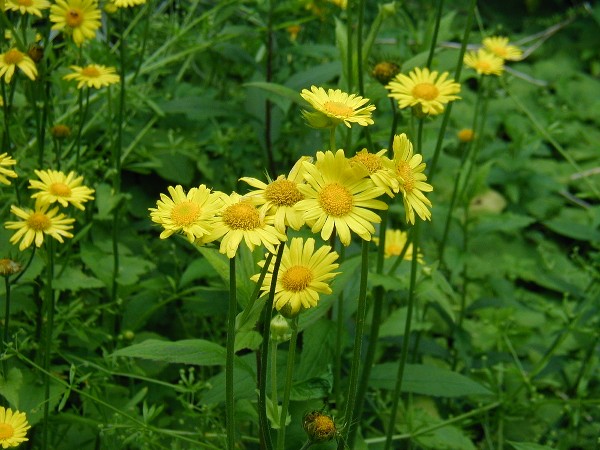
And it must work, because I've never seen a leopard here at BelleWood gardens.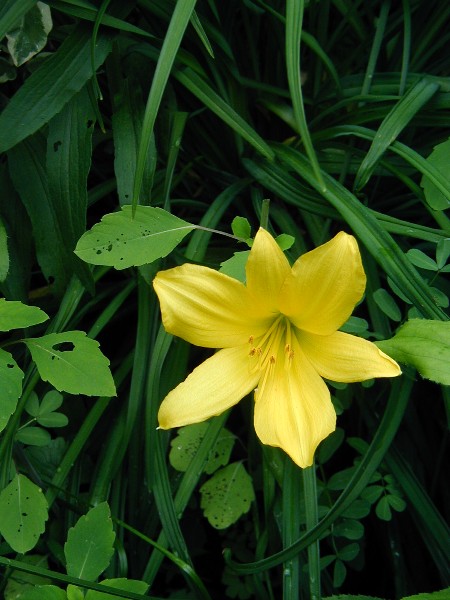
It is one of the perennials I made sure moved with me to New Jersey.
The clean yellow flowers have a delicious fragrance. Well worth that long-ago case of itchy / scratchy.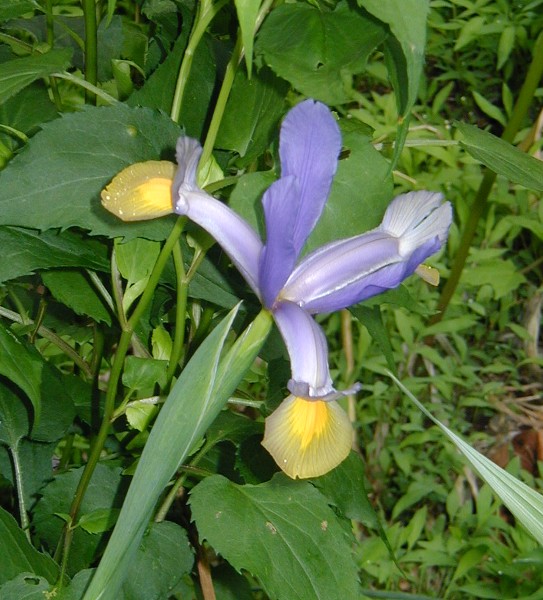
May
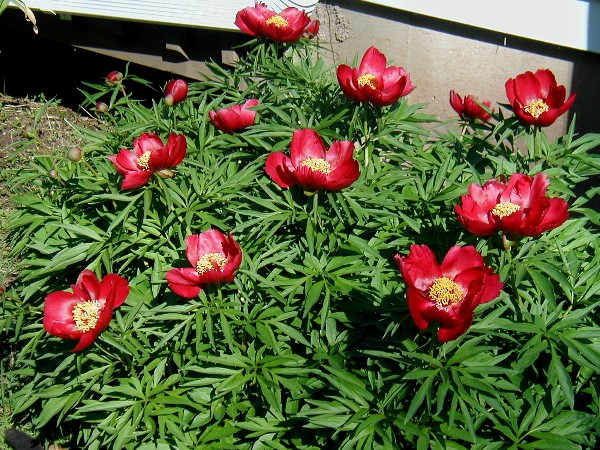
Photograph taken on 4 May.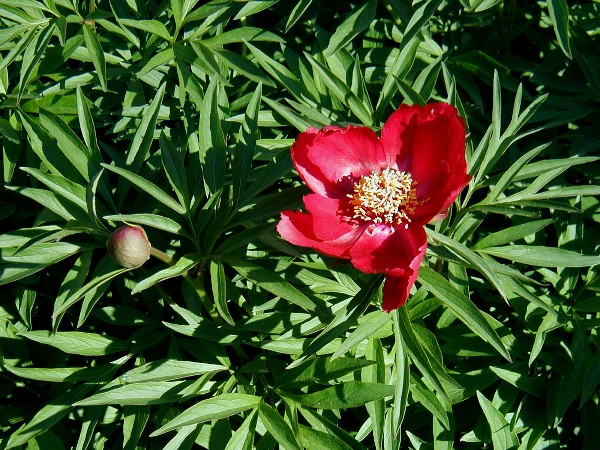
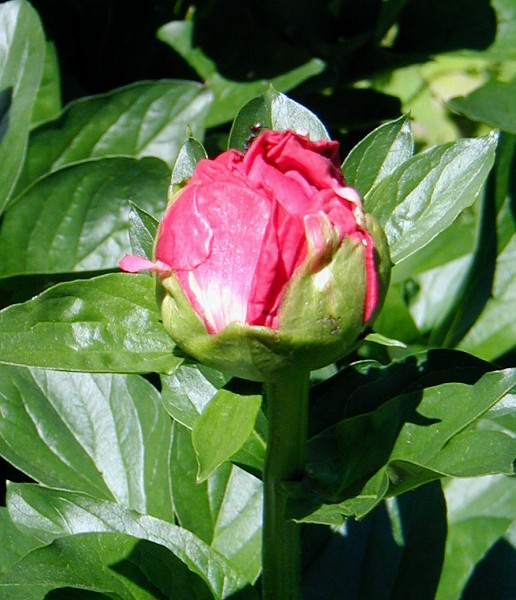
The ant is merely gathering sweet nectar droplets, and has nothing to do with whether or not peonies flower.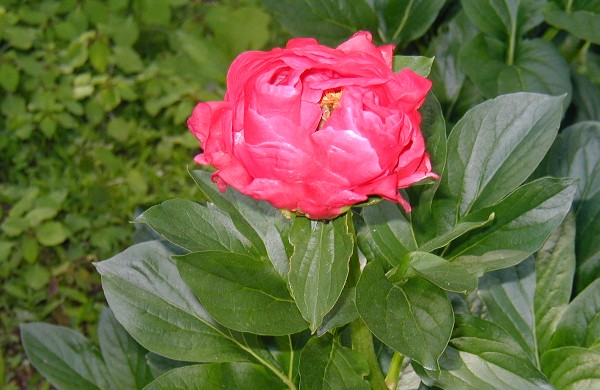
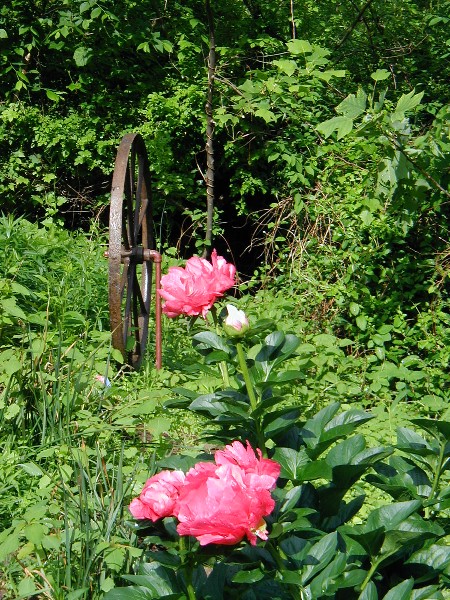

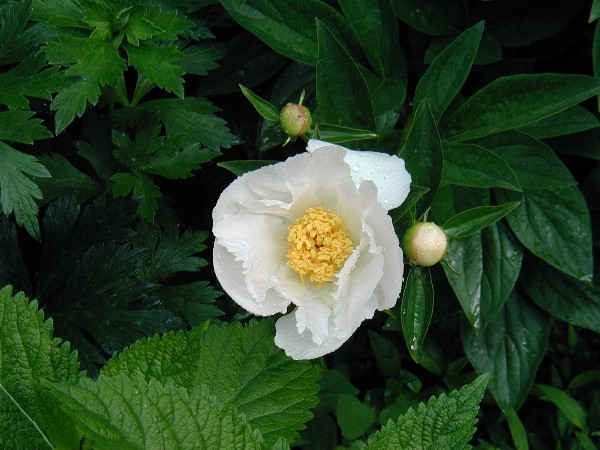
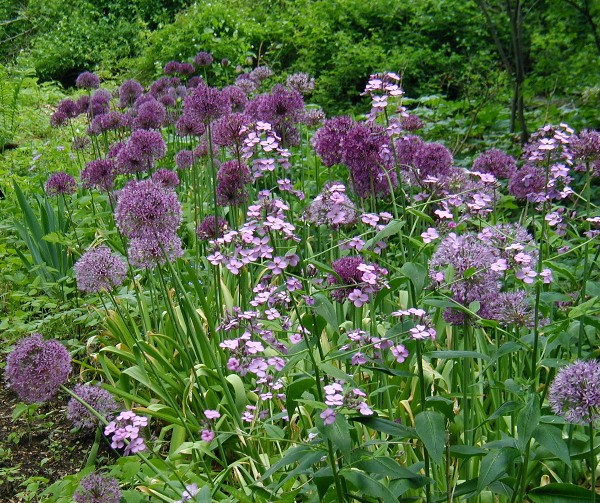

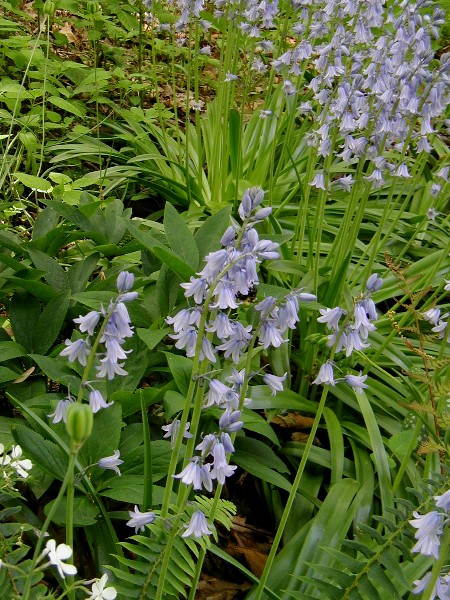
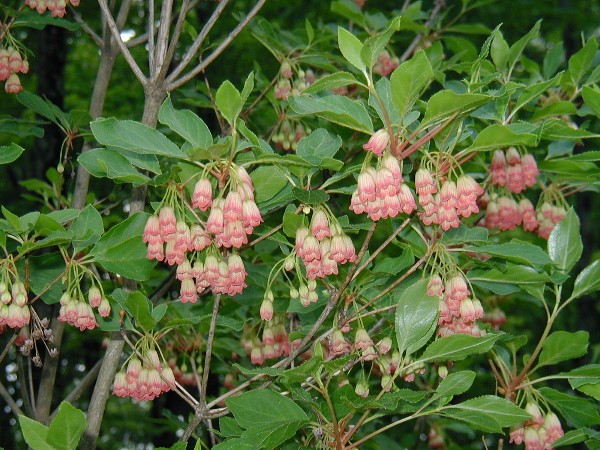
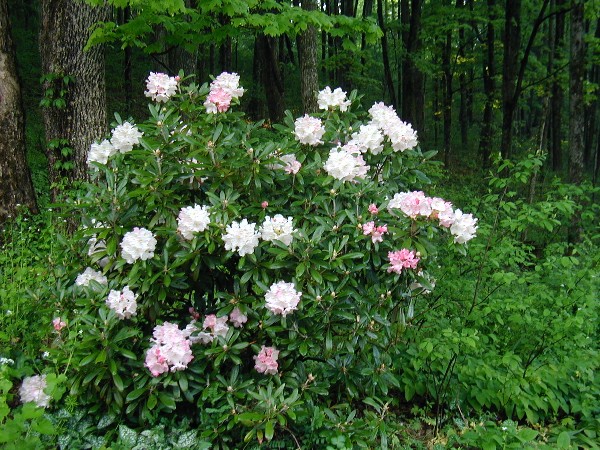
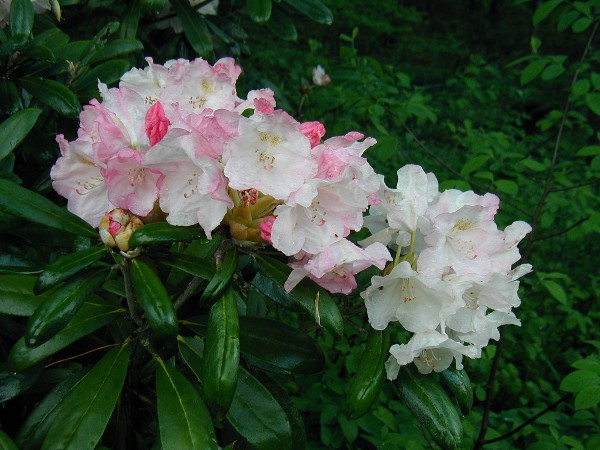
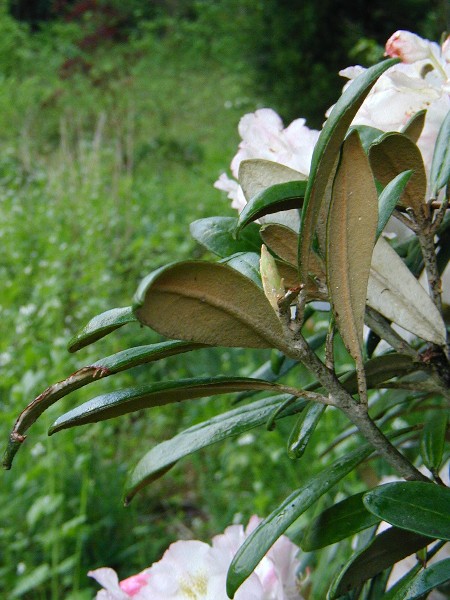
Deer must find this furriness unpalatable, as with lamb's ears, Stachys byzantina,
since they leave this shrub alone, sauntering past it with never a nibble.
April
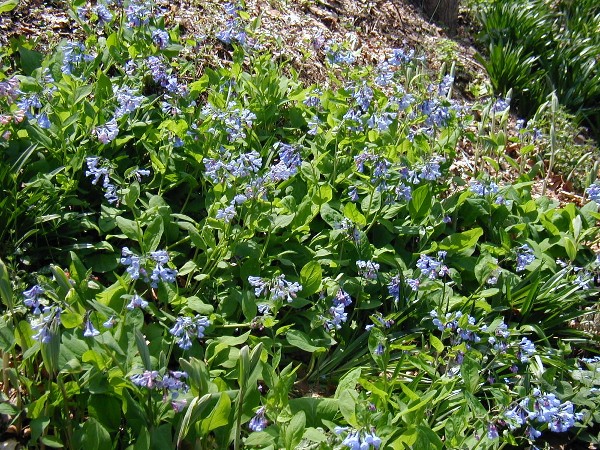
The plants will turn yellow and go dormant in just a few weeks, absent but for their brief springtime display.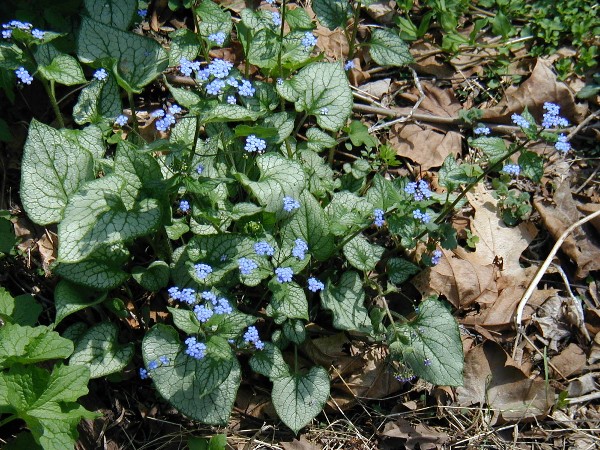
Flowers fade but the leaves remain, increasing in size and providing a cool display in summer.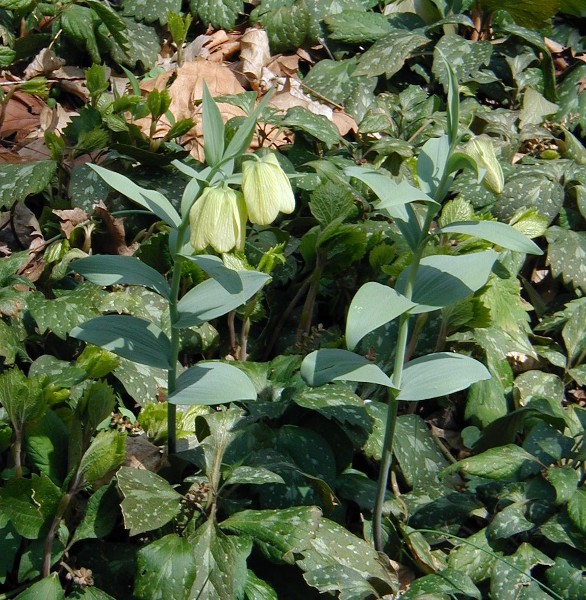
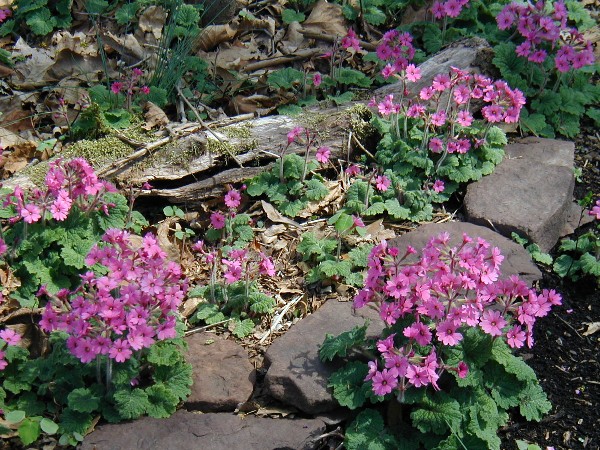
And there's something about BelleWood's soil that excourages rather rampant expansion.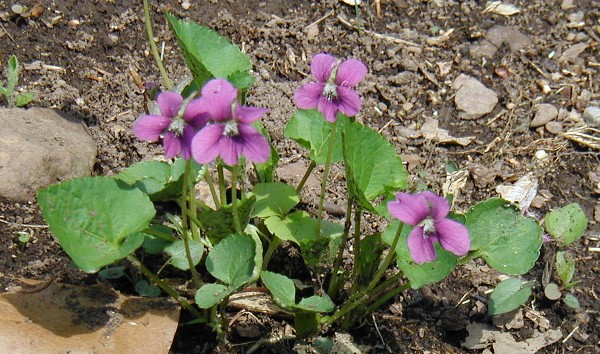
However violets may also have white or yellow flowers, or even, as here, attractive wine-red ones.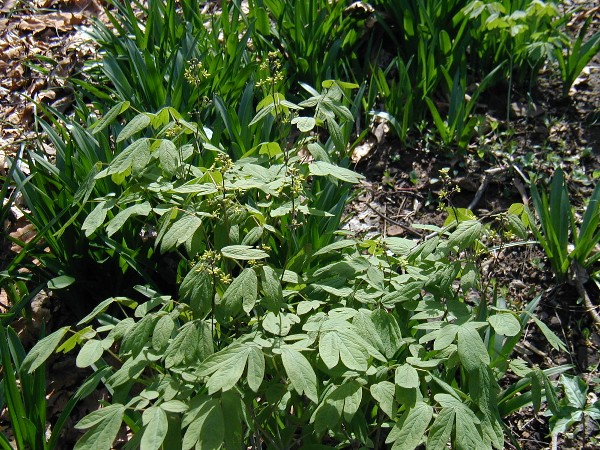
There are clusters of small, green / brown flowers at the top of each stalk.
Wait until autumn, when it's in fruit. Then you'll know why I welcome it into my garden.
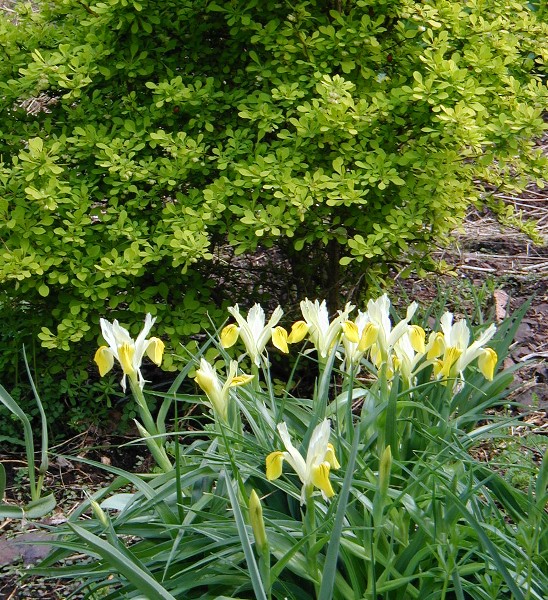
where it grows on rocky slopes at about 6,000 feet elevation.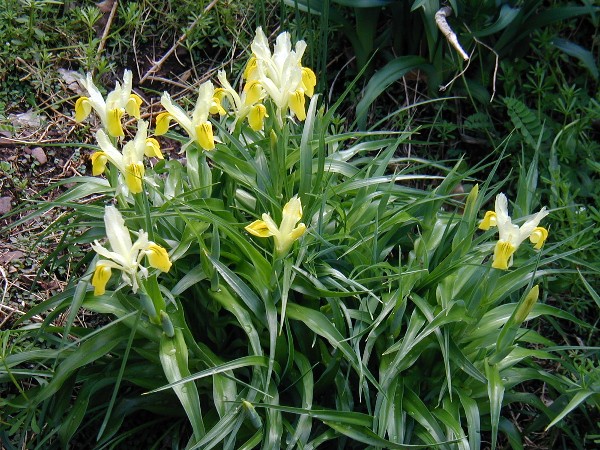
It is one of the easiest of the Juno iris, satisfied with a sunny, well-drained site.
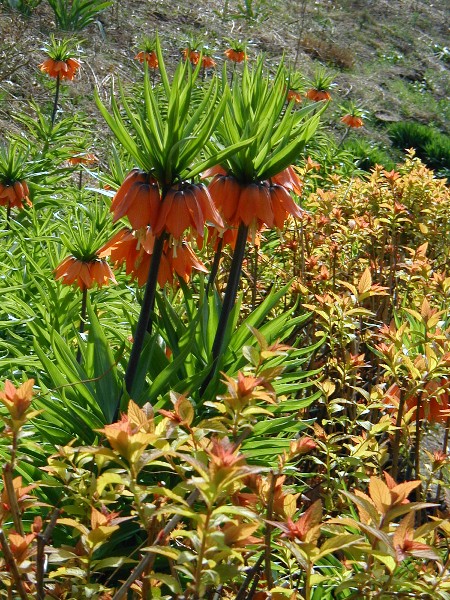
The original bulbs, each one a sizeable handful when planted several years ago, have settled in surprisingly well,
multiplying and creating a splendid spring scene. The only companion of suitable size and appropriate hue is Spirea 'Gold Flame',
the russet tones of its new growth complementing the bulbs' chunky, bell-like, skunk-scented flowers.
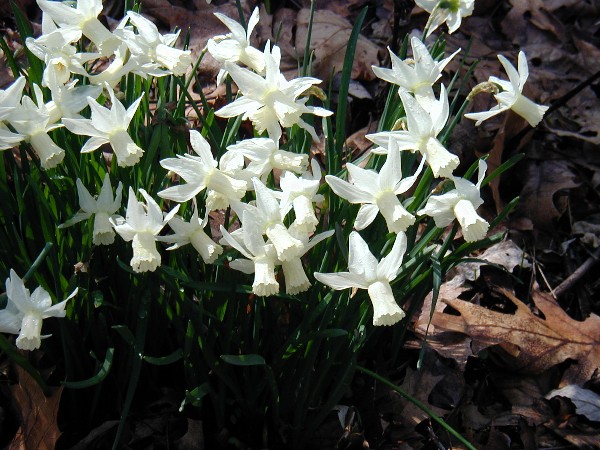
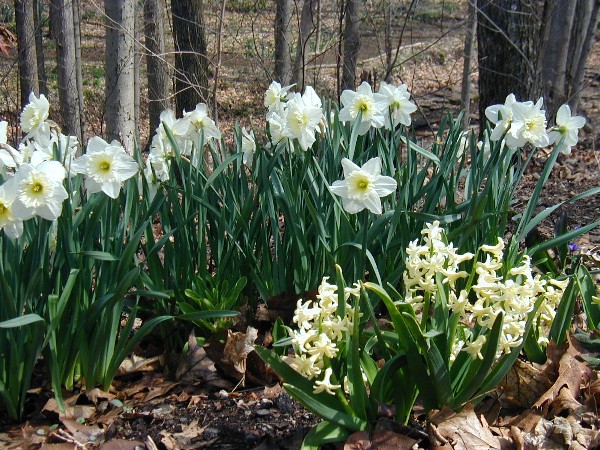
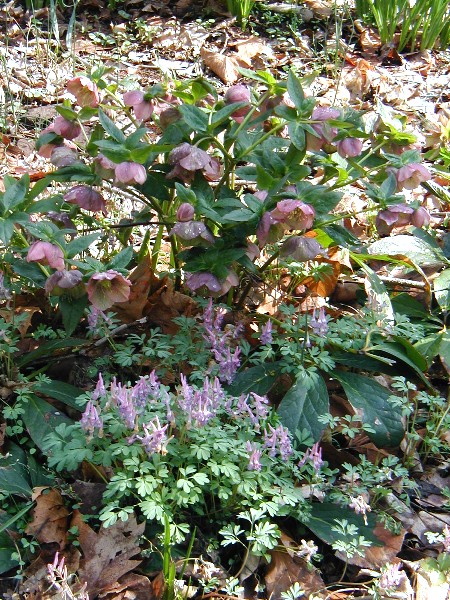
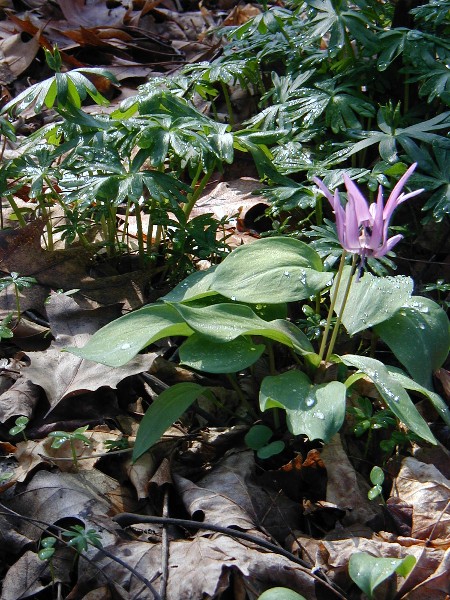
The common name of "dogtooth violet" refers to the shape of its bulb.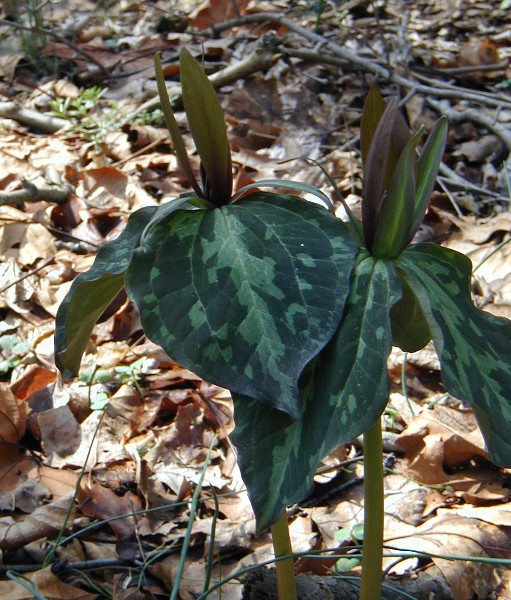
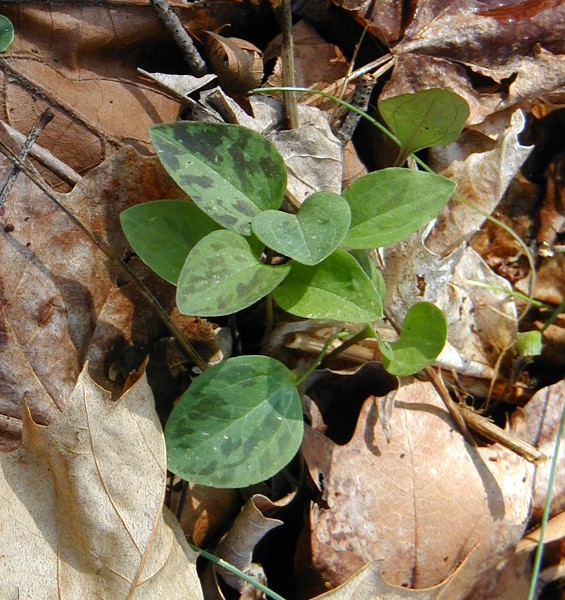
In their first year germinating seeds send down a radicle, a little root, but wait until their second growing season to send up a little leaf.
I won't disturb the ten or so seedlings until they gain another year (or two, maybe even three) of growth.